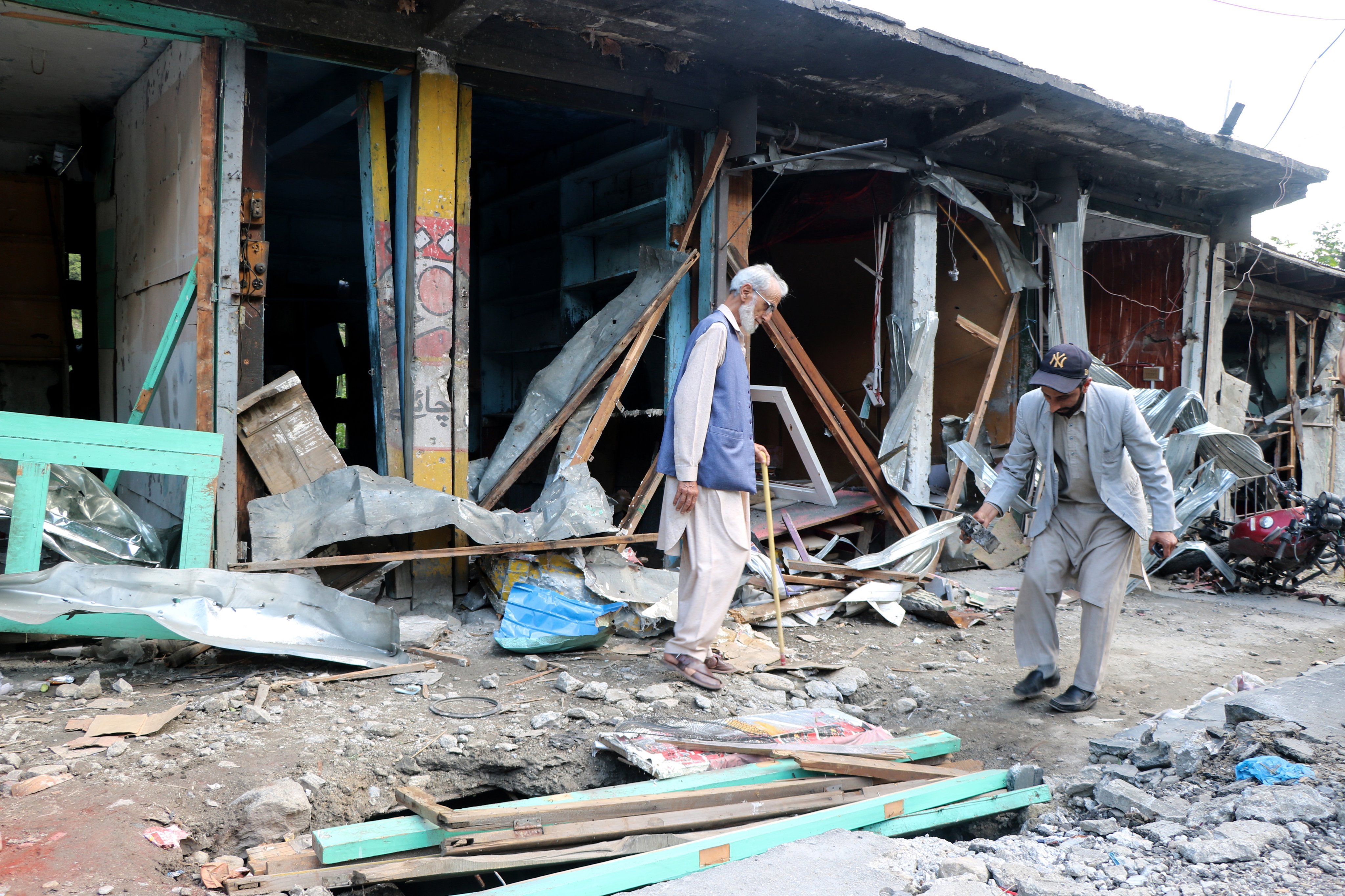Rapid escalation of India-Pakistan clashes a warning of new tech dangers
Drones, long-range missiles and related technologies spare soldiers from live combat but also allow conflicts to be escalated in almost no time

After days of intense hostilities, India and Pakistan agreed to a ceasefire, with US President Donald Trump claiming credit for the still-fragile agreement to halt military action along The Line of Control that divides Indian- and Pakistan-administered Kashmir.
The latest episode began on April 22, when a terrorist attack killed 26 civilians in Indian-administered Pahalgam, prompting New Delhi to announce Operation Sindoor on May 6 to target terrorist camps in Pakistani territory. Pakistan, naturally, responded with counterstrikes. What unfolded from May 6-10 brought the world a step closer to nuclear war.
But the dynamics of the escalation were particularly shaped by both militaries’ use of and reliance on missiles, drones – including loitering munitions, so called because they loiter overhead until an opportunity presents for the kill – and related technologies. It was also the first conflict to showcase the use of Chinese, American, Russian and French weapons systems.
The use of these technologically advanced weapons incentivised limited action, giving rise to tit-for-tat action and a protracted crisis, while simultaneously creating an environment where both sides alluded to being constrained in their military responses.
In other words, the conflict highlighted the restraint-escalation paradox. To understand how emerging and disruptive technologies allowed for kinetic action and restraint at the same time, it’s important to uncover what exactly the Indian and Pakistani militaries used.
Telltale signs first appeared in the 2019 Pulwama-Balakot crisis, when both countries used beyond-visual-range (BVR) capabilities in precision-guided munitions and air-to-air missiles. Between then and now, however, new BVR capabilities and stand-off systems – which allow weapons to be launched from afar – have transformed the long-standing conflict between India and Pakistan, allowing it to teeter at dangerous levels.
On May 7, India’s air strikes quickly turned into an air battle that may have been one of the longest and largest ever fought between the two countries in a concentrated airspace since World War II. Some 125 aircraft were reported, crowding the sky.
India used French-made Scalp cruise missiles and Hammer (highly agile modular munition extended range) bombs, also known as glide bombs. Scalp missiles are launched from the air, armed with bunker-busting warheads, can hit targets beyond 250km and are capable of flying closer to the ground to avoid radar detection. Hammer bombs, equipped with a range of guidance and warhead kits, can be deployed for close air support and deep strike operations.
As in 2019, India reportedly deployed the Israeli-made SPICE (smart, precise impact, cost-effective) guided bombs, specifically the SPICE 2000, which can operate in areas without the Global Positioning System (GPS), each munition assigned a separate mission on a single sortie.
It also reportedly fired the BrahMos supersonic cruise missile, a weapon India jointly developed with Russia that can be launched from land, sea or air, operates on a fire-and-forget principle and is notoriously hard to intercept – although Pakistan claims to have done so.
Suicide drones India reportedly used include the Israeli-made Harpy and Harop, long-range loitering munitions that can hover for up to nine hours. These state-of-the-art unmanned aerial vehicles (UAVs), with autonomous and semi-autonomous capabilities, can be launched in droves. Pakistan said it shot down at least 77 drones from India, targeting them with “hard kills” and “soft kills” through GPS jamming technology – but at least some Harop drones reportedly made it through Pakistan’s air defences.

Pakistan displayed its defence capabilities by repelling the initial May 7 Indian air strikes and by May 10, was launching drone attacks on as many as 26 cities in retaliation. Making the headlines was its deployment of the Chinese-made J-10C Vigorous Dragons, fighter jets equipped with PL-15E air-to-air missiles – thought to be able to travel around 140km – and which reportedly shot down India’s French-made Rafale fighter jets.
Pakistani military said it also launched both its indigenous medium-range Fateh missiles and Chinese-made CM-400AKG missiles – anti-ship hypersonic weapons that were claimed to have taken out two batteries of India’s S400 missile defence system, a claim New Delhi has denied. There are reports of Pakistan sending out the Turkish-made Songar drone, and loitering munitions have also been used for both surveillance and targeted strikes, though Pakistan has not named their make.
During this time, India is also believed to have come under attack from Pakistan’s cyber command, with critical infrastructure, including power plants and grid stations, hit. While the effect or aim of this cyberattack remains unknown, Indian authorities say that since the April 22 Pahalgam attack, the websites of critical infrastructure have been targeted with more than one million cyberattack attempts, of which only 150 have succeeded.
From India’s initial strike to Pakistan’s retaliation, the action may have spanned days but only added up to a matter of hours. However, even such extremely short windows were enough to show the speed, firepower and scale with which emerging and disruptive technologies were used to inflict damage.
Capabilities such as beyond-visual-range platforms, drones, missiles and loitering munitions allow militaries to spare personnel from live combat. But they have also allowed two nuclear-armed adversaries to escalate a conflict in almost no time.
Emerging military technology has not just bestowed greater efficacy on both militaries. It has also shaped the threat perceptions of India and Pakistan, skewed the escalation dynamics and changed the red lines. Beyond anything else, it should force a rethink on how any crisis between the two countries can spiral out of control.